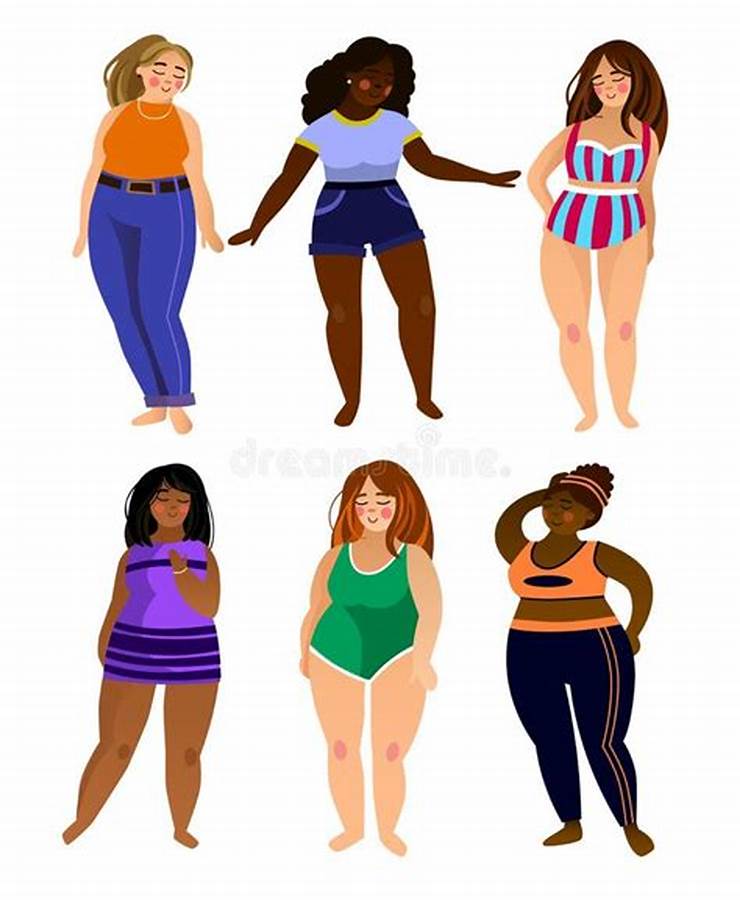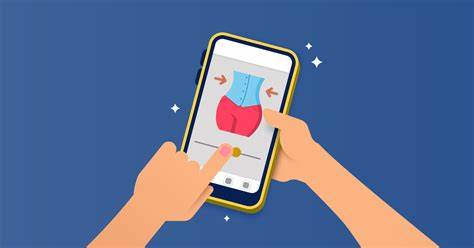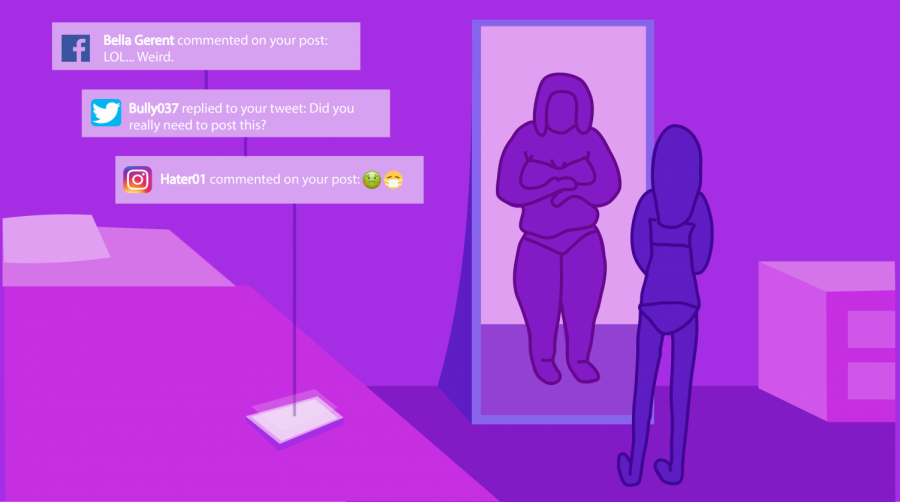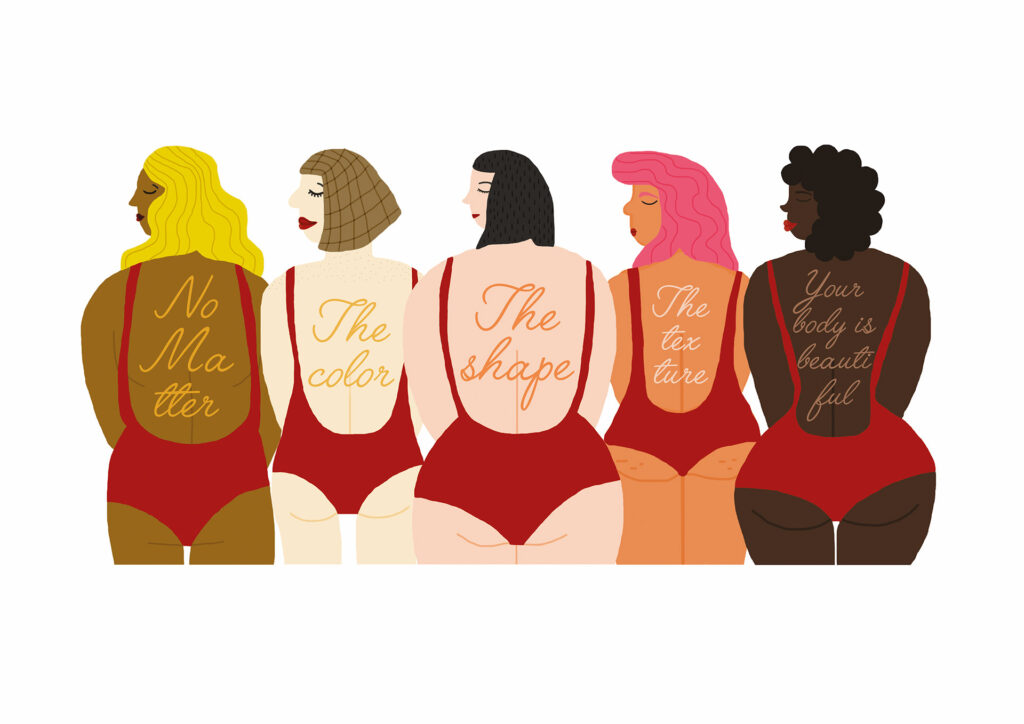
Recently, body positivity has grown as a movement, embracing all body types, challenging harmful beauty standards, and promoting self-love. Yet, despite these efforts to promote inclusivity and self-acceptance, body shaming continues to be widespread, particularly in the digital age. Social media platforms, designed for self-expression and connection, have instead perpetuated body shaming. Influencers promoting unattainable body ideals and anonymous online commenters perpetuate body shaming, making it thrive in today’s hyper-visible age.
Body shaming persists because social media, while meant to empower, inadvertently reinforces harmful beauty standards. Algorithms favor engaging content, which often aligns with conventional beauty ideals. As a result, users frequently see images that perpetuate unrealistic standards, leading to increased body dissatisfaction and shaming. The cycle continues despite efforts to promote diversity and self-love, highlighting the need for greater awareness and positive representation. Comparison culture, highly edited images, and influential accounts perpetuate unrealistic body ideals. Moreover, the anonymity and reach of online platforms allow for widespread body shaming and negative commentary. This paradox underscores the need for ongoing awareness and efforts to foster genuine self-acceptance and positive body image online.
The Evolution of Body Image: From Print Media to Social Media
Mass media in the 20th century drastically changed societal views on physical appearance, introducing unrealistic beauty standards. Previously, beauty was depicted in magazines, movies, and ads with slim, tall, “flawless” women and muscular, tall men. These standards were exclusive, not representative of real human diversity.
In the digital age, social media platforms like Instagram, Facebook, and TikTok have amplified these beauty ideals. Social media amplifies beauty standards, bombarding users with images of celebrities, influencers, and models whose appearances are often curated and edited. Social comparison becomes inevitable as users, often unknowingly, compare their bodies to these idealized versions of beauty. With just a scroll or a swipe, individuals can easily begin to feel inadequate or insecure about their own appearance.
The Power of Social Media

Social media platforms were originally created with the intention of connecting people globally, fostering creativity, and sharing stories. However, they have since evolved into powerful forces for influencing behavior, including how we view ourselves and others. Social comparison theory explains that people assess their worth by comparing themselves to others, influencing how we internalize social media content. And in a world where nearly everyone is sharing curated images, it’s easy to feel like you’re falling short.
What makes social media so damaging when it comes to body image is its instant and constant nature. A single moment on Instagram can lead to hours of self-doubt from airbrushed, filtered, and edited images. As people spend more time online, the pressure to conform to these beauty ideals intensifies.
Instagram and TikTok algorithms prioritize engaging content, often favoring conventional beauty standards. Images of symmetrical faces, hourglass figures, and slim physiques attract likes and comments, making them more visible to users. This cycle exposes users to unrealistic beauty standards, increasing body dissatisfaction and shaming rates.
Read Also:
Effective Exercises You Can Do at Home Without Any Gear
The Role of Influencers in Promoting Unrealistic Standards
Influencers, with their massive followings, have become some of the most prominent figures shaping beauty standards today. While some influencers advocate for body positivity and challenge traditional beauty ideals, many still promote a narrow and exclusionary definition of beauty. Sponsored posts, product endorsements, and paid collaborations often focus on weight loss supplements, diet plans, and beauty products that promise to make people look a certain way.
For example, influencers in the fitness and fashion industries often post content that showcases their toned, muscular bodies or emphasize the importance of “getting fit” to achieve the “perfect” body. These posts contribute to the narrative that the “ideal body” is one that is fit, lean, and conventionally attractive. However, for many people, these goals are either unattainable or require immense effort that can be unhealthy or unsustainable in the long run.
Even when influencers advocate for body positivity, they often still promote beauty standards that exclude people with larger body types or those who don’t fit the “ideal” body measurements. The prevalence of filters, Photoshop, and body-editing apps also sends the message that “imperfections” are something that need to be fixed in order to be deemed worthy or beautiful.
The Psychological Toll of Body Shaming in the Digital Age

Body shaming—whether direct or indirect—can have serious psychological and emotional consequences. Studies have shown that body shaming is linked to a range of mental health issues, including depression, anxiety, and eating disorders. For many, the pressure to conform to social media-driven beauty ideals leads to obsessive thoughts about weight, size, and appearance, which can be exhausting and debilitating.
Social media intensifies these pressures, as users are constantly exposed to edited images and messages about how they should look. The “likes” and “comments” a person receives often validate their appearance, contributing to the belief that their worth is tied to how they are perceived by others. The more validation a person receives for a curated, “ideal” image, the more likely they are to develop unhealthy relationships with their bodies.
Moreover, because social media fosters a culture of comparison, people often feel the need to “keep up” with the flawless images they see online. This culture of comparison leads to a cycle of self-doubt, low self-esteem, and body shaming, which is particularly detrimental to younger generations who are still developing their sense of self-worth.
Read Also:
Nigerian Powerhouse Breakfast – Dodo and Pap (Akamu)
Body Shaming and the ‘Comparison Trap’: A Dangerous Cycle
One of the most toxic aspects of social media is how it encourages the “comparison trap.” As users scroll through their feeds, they are bombarded with posts showcasing the “perfect” body—whether it’s someone on vacation with a flat stomach or an influencer in a size 0 bikini. With each post, the implicit message is that if you don’t look like this person, you’re somehow less worthy.
This constant comparison can lead to a distorted self-image. Individuals begin to feel inadequate because they compare their own natural bodies—complete with cellulite, stretch marks, and imperfections—to carefully curated and edited images. Social comparison becomes even more intense when people start comparing themselves to peers or friends rather than public figures. For example, if someone sees an acquaintance posting a “fitness transformation” or an image of a “perfect body,” it may leave them feeling dissatisfied with their own appearance.
The cycle is self-perpetuating: the more people compare themselves to unattainable standards, the more dissatisfied they become with their own bodies, and the more likely they are to engage in body-shaming behaviors, both toward themselves and others.
The Impact of Body Shaming on Mental Health and Well-being
The effects of body shaming are not just superficial. They extend far beyond the realm of appearance and can have a profound impact on an individual’s mental health. People who experience body shaming are at greater risk for developing eating disorders like anorexia, bulimia, or binge eating disorder. Studies have also shown that body shaming is linked to depression, low self-esteem, and anxiety.
When social media perpetuates the idea that only certain bodies are worthy of love or success, it alienates those who don’t fit those ideals. Women, in particular, are often subjected to both body shaming and fat-shaming, criticized for being “too thin” or “too large.” These contradictory standards create an environment where women feel as though their bodies are constantly scrutinized and judged.
One significant factor that contributes to body shaming in the digital age is the objectification of women’s bodies. Social media platforms, particularly Instagram, often highlight women based on how they look rather than what they do or say. This fosters a culture of judgment based on appearance, rather than recognizing the complexity and diversity of individuals.
Body Positivity vs. Body Shaming: The Battle for Inclusivity

While body positivity has made significant strides in pushing back against traditional beauty standards, it’s still an uphill battle. The body positivity movement advocates for the acceptance of all body types, encouraging people to love themselves regardless of size, shape, or color. However, even as this movement gains traction, body shaming remains a dominant force in mainstream culture, particularly on social media.
One of the key issues is that the body positivity movement has, at times, been co-opted by influencers and brands that continue to push the same narrow ideals of beauty. While they may promote “body acceptance,” they still rely on edited images, filters, and Photoshop to project an ideal image of what is “acceptable.” These mixed messages can undermine the very principles of body positivity.
Read Also:
Sexual Promiscuity: A Double-Edged Sword
Breaking the Cycle: What Can We Do to Combat Body Shaming?
While body shaming is deeply ingrained in social media culture, there are steps that both individuals and communities can take to reduce its prevalence and impact.
1. Promote Media Literacy
One of the most effective ways to combat body shaming in the digital age is through media literacy. By teaching individuals, especially young people, how to critically analyze images on social media, we can help them recognize that many of these images are edited, airbrushed, or filtered. When people are able to distinguish between reality and fantasy, they are less likely to compare themselves to unrealistic beauty standards.
2. Celebrate Diverse Bodies
Another key to combating body shaming is to celebrate diverse bodies. Social media platforms need to give more visibility to people of all sizes, shapes, colors, and abilities. This means featuring real, unfiltered images of individuals who don’t fit the narrow standards of beauty often seen in mainstream media.
3. Encourage Authenticity Over Perfection
Social media influencers and celebrities should embrace their authentic selves and share more unfiltered, “real” content. By showcasing imperfections and embracing their bodies as they are, influencers can set an example for others to do the same. Encouraging authenticity over perfection would shift the focus from achieving an unattainable ideal to embracing self-love and acceptance.
4. Create a Supportive Community
Building a positive and supportive online community is essential to breaking the cycle of body shaming. Social media platforms must enforce stricter anti-bullying policies, and users should take responsibility for fostering an inclusive, kind space. This includes offering supportive comments, reporting harmful content, and promoting positive body image.
5. Focus on Health and Well-being
Finally, we must shift the focus from appearance to health and well-being. Promoting a healthy lifestyle that includes both physical and mental well-being will help to reduce the pressure on individuals to conform to any specific body type. Health is about how you feel, not how you look.
You Might Also Like…
The Hidden Dangers of Artificial Intelligence: Job Displacement and Existential Risks
Conclusion
Body shaming is a deeply ingrained issue that continues to be amplified by social media. Despite the rise of body positivity and increased awareness around self-love, the relentless pressure to conform to a narrow ideal of beauty persists. Social media plays a significant role in perpetuating unrealistic beauty standards, but we all have the power to change the narrative. By celebrating diversity, embracing authenticity, and educating others on the impact of body shaming, we can create a more inclusive digital space where everyone feels accepted and valued for who they are, not just how they look.
FAQs
1. How does social media contribute to body shaming?
Social media contributes to body shaming by perpetuating unrealistic beauty standards, showcasing heavily edited images, and encouraging comparison. Platforms reward content that fits a narrow definition of beauty, leading people to feel inadequate if they don’t measure up.
2. Can body shaming affect mental health?
Yes, body shaming can significantly impact mental health, leading to issues like depression, anxiety, low self-esteem, and eating disorders. The pressure to conform to societal beauty ideals can create a toxic cycle of self-doubt and insecurity.
3. What is the difference between body positivity and body shaming?
Body positivity is the acceptance and celebration of all body types, encouraging self-love and rejecting harmful beauty standards. Body shaming, on the other hand, involves criticizing or ridiculing someone for their physical appearance, reinforcing the idea that only certain body types are acceptable.
4. How can social media influencers help reduce body shaming?
Influencers can help by embracing authenticity, sharing unfiltered images, and promoting diverse body types. By showing that beauty comes in all forms, they can inspire others to love and accept themselves as they are.
5. What can we do as individuals to combat body shaming?
We can combat body shaming by practicing self-love, educating ourselves about the impact of social media, and fostering positive online communities. Supporting others, reporting harmful content, and promoting inclusive beauty standards are all important steps we can take.


